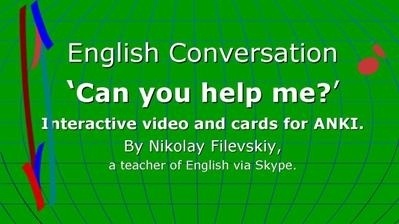How To Learn English Fast With Active Learning For Language Learning
Google search of the exact phrase "how to learn English fast" produces 86,000 references; however, this question is asked again and again. Why?
Because we forget about Albert Einstein’s famous quote: No problem can be solved by the same kind of thinking that created it.
To offer an answer of value to the title question any research has to describe:
- The problems adults encounter when learning English as a foreign language (EFL).
- The conventional thinking that resulted in the problem.
- How the conventional thinking should be modified to get successful results.
- The new features of the applied linguistics and tools for learning English fast.
The Problems Adults Encounter When Learning English As A Foreign Language
The critical problem: Τhe majority of EFL students demonstrate the inability to effectively use English outside the classroom, despite many years of instruction. The conventional methods of teaching EFL have the following deficiencies:
- They do not teach learners how to think in English.
- They can’t stop cross-translation in learner’s head of incoming information into the native language.
- They belong to passive learning because conventional pedagogies dissect the language into individual components and teach reading, speaking, pronunciation, and grammar separately.
- They teach vocabulary lists outside of authentic context and use some sort of flashcards to memorize the words and phrases.
- Support in the native language is substituted by images or photos that inevitably reinforce cross-translation in the head.
- In a classroom with about 20 learners, each learner has only a chance to speak for a minute or two; the remaining time he or she is listening to the teacher or the broken English of peers.
We all know the fact that about 25% of the Chinese population are learning English, and only 1% are capable of speaking English fluently. There are millions of English learners who can read and write in English but can’t speak fluently. These learners have extensive passive vocabulary; it means they understand the English words, but can't use them in conversation because they remembered the words as translations into the native language.
Most adults encounter great difficulties when learning EFL by conventional methods which are based on the obsolete way of thinking or assumptions.
The Conventional Thinking That Resulted In The Problem
The conventional thinking or applied linguistics in the last 5 decades didn’t demonstrate any major breakthrough. Applied linguists, educators, and teachers still believe:
- Adults may learn EFL as children do.
- Flashcards are efficient for building vocabulary.
- A foreign language is an information to be consciously memorized.
- Immersion requires one-language approach: Translation to the native language is substituted by images or photos.
- Compare your pronunciations with the pronunciations recorded by a native speaker and memorize them.
The above assumptions are misconceptions which were described in my article. The main consequence of the conventionally Applied Linguistics is that all methods of learning English belong to passive learning. Some teachers believe that because their learners spend 80% of their class time speaking in English, they are using active learning. However, only one person speaks at a time; the rest of the class is listening to the teacher or to the broken English of their peers. In a class of 20 students, each student may speak for no more than 1 or 2 minutes.
To differentiate active learning from passive learning, we recommend a simple rule:
- If a learner performs 1 or 2 actions while learning – he is doing conscious passive learning. Examples: Reading and listening, or watching and listening, or speaking.
- If a learner performs 3 or more actions while learning concurrently – he is doing subconscious active learning. Example: Simultaneously reading the text, listening to the recording of this text, and speaking or imitating the recording.
The difference between the conscious passive learning and the subconscious active learning of English skills is similar to the difference between flat-earth thinking and round-earth thinking.
Active learning of English skills allows all students to speak in a class simultaneously using earphones and working on the lessons provided by the mobile application that is based on active learning. In this situation, learners speak 5-10 times more than in a traditional class. Active learning lessons engage all the senses, not just listening. In multi-sensory learning, we read, listen, and speak at the same time, using all our senses. This activates more areas of your brain, so you retain more of what you learn.
Conventional methods of learning English don’t teach the learner how to stop thinking in the native language and that is why they have a very high failure rate. Unfortunately, nobody can think in a language that he or she is learning. You learn a new language by translating the words into your native language and remembering them as translations to your native language. By the way, this cross-translation in the head occurs, even in those cases when the teacher does not use the native language in the classroom. This creates a huge problem; learners continue thinking in the native language while trying to speak in a foreign language. It is nearly impossible. That is why the failure rate of learning a foreign language is about 95%. You will always get advice from the lucky 5% of people who learned a foreign language easily, and mistakenly think that everybody can copy them.
In my answers, I try to help 95% of people who can’t learn a foreign language by traditional methods which use a passive approach and do not teach learners how to think in English. We need a new approach. To achieve this objective we need to address the conventional thinking that resulted in the problem.
How The Conventional Thinking Should Be Modified To Get Successful Results
We should be aware that the new concepts need to be accepted by our way of thinking. For example:
- Adults can't learn EFL as children do.
- Flashcards should be avoided because they reinforce cross-translation into the native language.
- Language skills are trained subconsciously much faster than consciously learned.
- The one-language approach is inefficient; support in the native language is mandatory.
- Train pronunciation during simultaneous repetitions of sentences in authentic context instead of single words or phrases.
Adults can't learn EFL as children do because the more we use our native language - the more it comes to dominate our linguistic map space. Most adults, when learning a foreign language, subconsciously revert to cross-translation to and from their mother tongue. The act of listening seems simple enough; the ears register the sounds produced and the brain interprets them, assuming the sounds reach the ears and the listener knows the meaning of the words. A child and an adult have different listening mechanisms.
A child goes through one-word and two-word stages before he or she starts producing sentences. For children, it is a standard approach – first listening, and then speaking. The child’s brain during the first year of listening creates a database of audio images associated directly with the pictures or actions which they describe. However, the sounds of a foreign language cannot be registered and interpreted by an adult’s brain because listeners do not know the meaning of the words. Sounds of a new language in a simple process of listening would mean nothing to the brain; to protect the brain from stress caused by this unnatural process, an adult’s listening ability will be shut down after a few minutes. You may find additional information in the article Why Can't Adults Learn Languages Like Children Do?.
The native language support is mandatory for adults to make the texts comprehensible; however, it should be designed in a special way that eliminates cross-translation.
English learners at the beginning don't recognize the English phonemes and require special English for stress-free learning. The mobile application uses special English for the first 10 lessons to help adults recognize, then imitate, and finally produce English phonemes. After that, regular English speech is used for active learning of English skills.
The New Features Of The Applied Linguistics And Tools For Learning English Fast
The active learning of English skills appeared as a result of modifying the conventional thinking by substituting misconceptions with the new belief system. The main features of the active learning of English skills:
- The active learning main drill consists in performing 3 actions simultaneously: Reading the text, listening to the recording in earphones, and speaking.
- Active learning is the subconscious method of acquiring English skills during repetition and imitation of understandable sentences which preclude any possibility of making mistakes or 'losing face'.
- Active learning transforms complex technology into something simple and intuitive when practice means many more topics can be provided to the learners because each learner has an option of creating his or her own lessons.
- Active learning introduces student-centered lessons, and ensures more effective results without descending into chaos because each student speaks flawless English 80% of the lesson time by using a mobile device and earphones.
- In active learning the ability to think in English is formed subconsciously while the innate habit of cross-translation is turned off automatically. The learners are able to speak English fluently in about 12 months.
- In active learning, we often do the opposite of what we are currently doing in the conventional way of learning and achieve much better results: No lecturing about the language. No flashcards or memorization of word lists. No translation into the native language. No grammar explanations. No correction of grammar or pronunciation errors.
- In active learning, the learners acquire intuitive grammar, language patterns, and ability to think in English through subconscious training of all English skills concurrently.
- Active learning is equally efficient in a class of 5 or 30 learners.
I am aware that it is hard to change your own opinions formed during many years of experience. That is why I call active learning a disruptive invention: It disrupts the old truth, and proclaims the new truth. You need to be open-minded, and allow the new way of thinking to become your new awareness. It might be helpful at this point to read the testimonials of teachers who implemented this technique.








